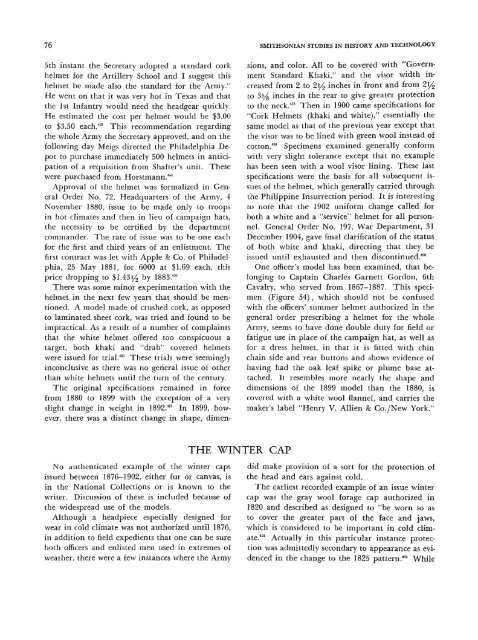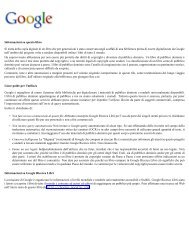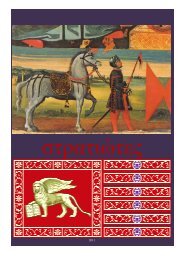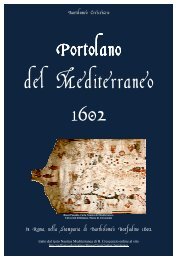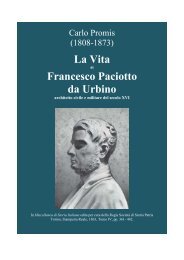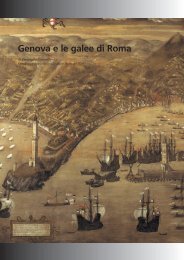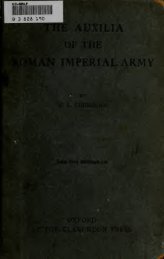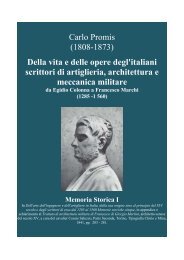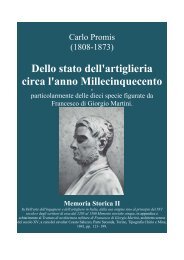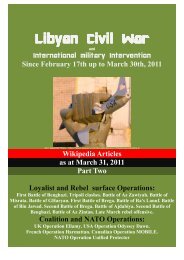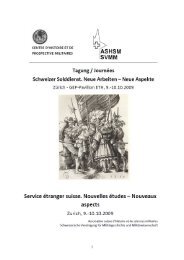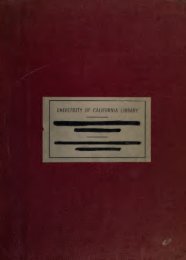United States Army Headgear 1855-1902 - Libreria Militare Ares
United States Army Headgear 1855-1902 - Libreria Militare Ares
United States Army Headgear 1855-1902 - Libreria Militare Ares
- No tags were found...
You also want an ePaper? Increase the reach of your titles
YUMPU automatically turns print PDFs into web optimized ePapers that Google loves.
76 SMITHSONIAN STUDIES IN HISTORY AND TECHNOLOGY5th instant the Secretary adopted a standard corkhelmet for the Artillery School and I suggest thishelmet be made also the standard for the <strong>Army</strong>."He went on that it was very hot in Texas and thatthe 1st Infantry would need the headgear quickly.He estimated the cost per helmet would be $3.00to $3.50 each.'^' This recommendation regardingthe whole <strong>Army</strong> the Secretary approved, and on thefollowing day Meigs directed the Philadelphia Depotto purchase immediately 500 helmets in anticipationof a requisition from Shafter's unit. Thesewere purchased from Horstmann.'^'Approval of the helmet was formalized in GeneralOrder No. 72, Headquarters of the <strong>Army</strong>, 4November 1880, issue to be made only to troopsin hot climates and then in lieu of campaign hats,the necessity to be certified by the departmentcommander. The rate of issue was to be one eachfor the first and third years of an enlistment. Thefirst contract was let with Apple & Co. of Philadelphia,25 May 1881, for 6000 at $1.69 each, thisprice dropping to $1.43i/4 by 1883.'"There was some minor experimentation with thehelmet in the next few years that should be mentioned.A model made of crushed cork, as opposedto laminated sheet cork, was tried and found to beimpractical. As a result of a number of complaintsthat the white helmet offered too conspicuous atarget, both khaki and "drab" covered helmetswere issued for trial.'"'' These trials were seeminglyinconclusive as there was no general issue of otherthan white helmets until the turn of the century.The original specifications remained in forcefrom 1880 to 1899 with the exception of a veryslight change in weight in 1892.'^' In 1899, however,there was a distinct change in shape, dimensions,and color. All to be covered with "GovernmentStandard Khaki," and the visor width increasedfrom 2 to 21/2 inches in front and from 2i/2to SYs inches in the rear to give greater protectionto the neck."' Then in 1900 came specifications for"Cork Helmets (khaki and white)," essentially thesame model as that of the previous year except thatthe visor was to be lined with green wool instead ofcotton."*" Specimens examined generally conformwith very slight tolerance except that no examplehas been seen with a wool visor lining. These lastspecifications were the basis for all subsequent issuesof the helmet, which generally carried throughthe Philippine Insurrection period. It is interestingto note that the <strong>1902</strong> uniform change called forboth a white and a "service" helmet for all personnel.General Order No. 197, War Department, 31December 1904, gave final clarification of the statusof both white and khaki, directing that they beissued until exhausted and then discontinued.'""One officer's model has been examined, that belongingto Captain Charles Garnett Gordon, 6thCavalry, who served from 1867-1887. This specimen(Figure 54), which should not be confusedwith the officers' summer helmet authorized in thegeneral order prescribing a helmet for the whole<strong>Army</strong>, seems to have done double duty for field orfatigue use in place of the campaign hat, as well asfor a dress helmet, in that it is fitted with chinchain side and rear buttons and shows evidence ofhaving had the oak leaf spike or plume base attached.It resembles more nearly the shape anddimensions of the 1899 model than the 1880, iscovered with a white wool flannel, and carries themaker's label "Henry V. Allien & Co./New York."THE WINTER CAPNo authenticated example of the winter capsissued between 1876-<strong>1902</strong>, either fur or canvas, isin the National Collections or is known to thewriter. Discussion of these is included because ofthe widespread use of the models.Although a headpiece especially designed forwear in cold climate was not authorized until 1876,in addition to field expedients that one can be sureboth officers and enlisted men used in extremes ofweather, there were a few instances where the <strong>Army</strong>did make provision of a sort for the protection ofthe head and ears against cold.The earliest recorded example of an issue wintercap was the gray wool forage cap authorized in1820 and described as designed to "be worn so asto cover the greater part of the face and jaws,which is considered to be important in cold climate.'"Actually in this particular instance protectionwas admittedly secondary to appearance as evidencedin the change to the 1825 pattern."" While


